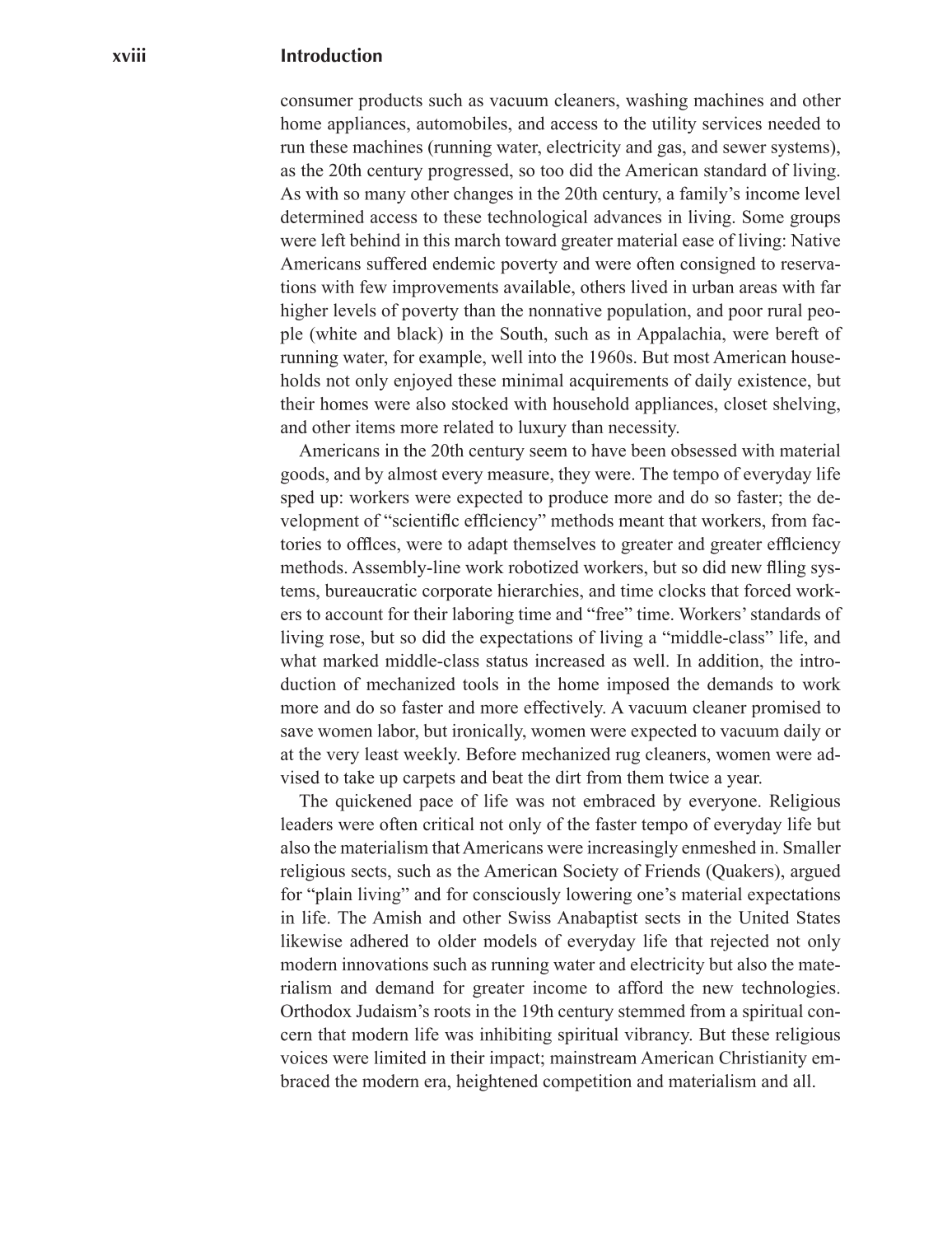xviii Introduction
consumer products such as vacuum cleaners, washing machines and other
home appliances, automobiles, and access to the utility services needed to
run these machines (running water, electricity and gas, and sewer systems),
as the 20th century progressed, so too did the American standard of living.
As with so many other changes in the 20th century, a family’s income level
determined access to these technological advances in living. Some groups
were left behind in this march toward greater material ease of living: Native
Americans suffered endemic poverty and were often consigned to reserva-
tions with few improvements available, others lived in urban areas with far
higher levels of poverty than the nonnative population, and poor rural peo-
ple (white and black) in the South, such as in Appalachia, were bereft of
running water, for example, well into the 1960s. But most American house-
holds not only enjoyed these minimal acquirements of daily existence, but
their homes were also stocked with household appliances, closet shelving,
and other items more related to luxury than necessity.
Americans in the 20th century seem to have been obsessed with material
goods, and by almost every measure, they were. The tempo of everyday life
sped up: workers were expected to produce more and do so faster; the de-
velopment of “scientific efficiency” methods meant that workers, from fac-
tories to offices, were to adapt themselves to greater and greater efficiency
methods. Assembly-line work robotized workers, but so did new filing sys-
tems, bureaucratic corporate hierarchies, and time clocks that forced work-
ers to account for their laboring time and “free” time. Workers’ standards of
living rose, but so did the expectations of living a “middle-class” life, and
what marked middle-class status increased as well. In addition, the intro-
duction of mechanized tools in the home imposed the demands to work
more and do so faster and more effectively. A vacuum cleaner promised to
save women labor, but ironically, women were expected to vacuum daily or
at the very least weekly. Before mechanized rug cleaners, women were ad-
vised to take up carpets and beat the dirt from them twice a year.
The quickened pace of life was not embraced by everyone. Religious
leaders were often critical not only of the faster tempo of everyday life but
also the materialism that Americans were increasingly enmeshed in. Smaller
religious sects, such as the American Society of Friends (Quakers), argued
for “plain living” and for consciously lowering one’s material expectations
in life. The Amish and other Swiss Anabaptist sects in the United States
likewise adhered to older models of everyday life that rejected not only
modern innovations such as running water and electricity but also the mate-
rialism and demand for greater income to afford the new technologies.
Orthodox Judaism’s roots in the 19th century stemmed from a spiritual con-
cern that modern life was inhibiting spiritual vibrancy. But these religious
voices were limited in their impact; mainstream American Christianity em-
braced the modern era, heightened competition and materialism and all.




























































































































































































































































































































































































